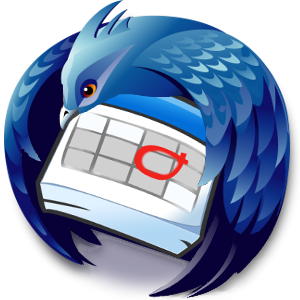

I see that the newer filesize and timestamp have successfully synced on the Thinkpad. Step 3: I close Thunderbird on both machines, then use SeaFile to sync the entire calander-data/ folder on both. I conclude that local.sqlite contains all relevant calendar data. On the Chromebook, I create a new calendar event, save it, and see that ~/.thunderbird/fault/calendar-data/local.sqlite has increased in size and has a newer "last-modified" timestamp. Step 2: It looks like all relevant Thunderbird data are stored in ~/.thunderbird/fault/, with calendar data in ~/.thunderbird/fault/calendar-data/. Then, I install Thunderbird and open it: presto, all my accounts, old emails, and (most importantly) calendar events are accessible. Step 1: On my new Chromebook, I copy over my entire Thunderbird directory:

I use SeaFile (a FOSS DropBox equivalent) to sync folders & files between my machines. Suggestions online often mention Google Calendar, but I'd rather use open-source tools (that I control) to do the job. I use Thunderbird/Lightning as my email/calendar client on my main computer (Thinkpad W541, Ubuntu Unity, 16.04) and my travel Chromebook (Acer C720, Ubuntu XFCE, 16.04), and I wanted to regularly sync the calendar data between both machines. On Windows the files are located in a different spot (Google will tell you where), but the overall method should still work with DropBox, SeaFile, or equivalent data-syncing services. I got this to work on Linux, and here's how I did it. Good luck!įigure 1 - Install a the downloaded exchange pluginįigure 2 - Configure the Exchange Settingsįigure 3 - After clicking "Check Server and Mailbox", the folder base input appears with a "Next" button Everything seems to work from this point. If you got the server and username right, the folder base input should appear With a Next button (figure 3). I could not get the autodiscovery feature to work, but if you enter the correct server url and username, you're good to go. Right click in the calendars section and choose "new calendar". Once the plugins are all installed and Thunderbird has re-started, open the calendar tab in Thunderbird.Click the icon to install an add-on from a local file (fig 1 below).Save the file to your Downloads folder (or elsewhere). The *.xpi plugin may be inside a zip file. Download the ms-exchange calendar plugin from ExchangeCalendar/exchangecalendar.Install the Lightning Plugin for Thunderbird.The ExchangeCalendar/exchangecalendar plugin for Thunderbird seems to solve this problem gracefully.


 0 kommentar(er)
0 kommentar(er)
